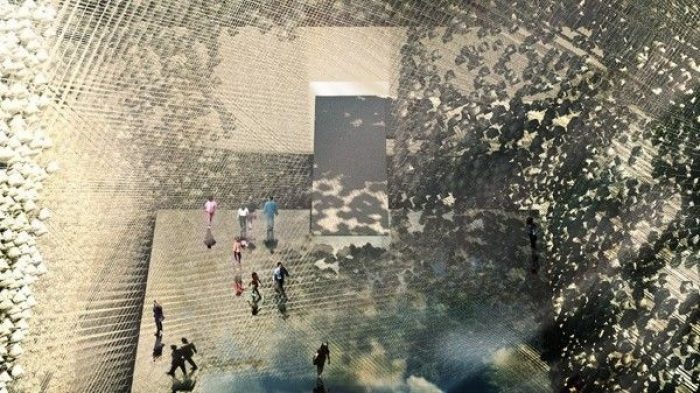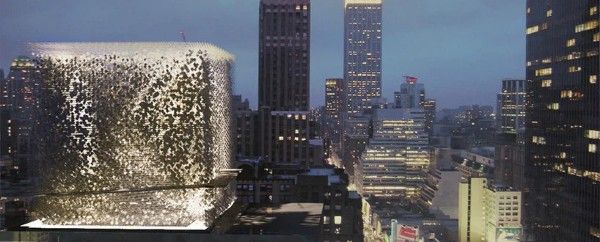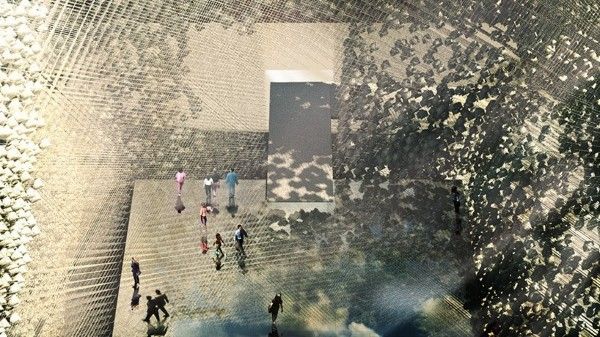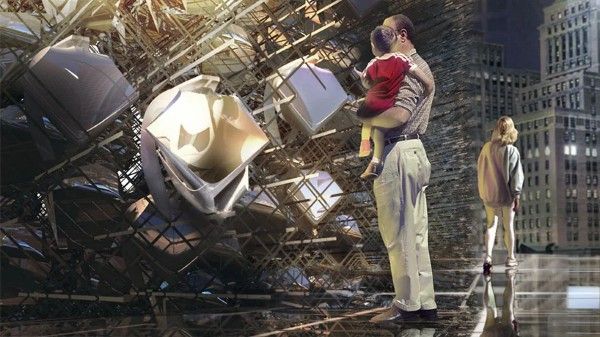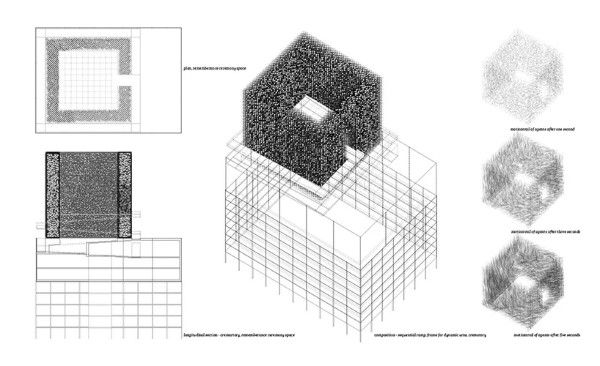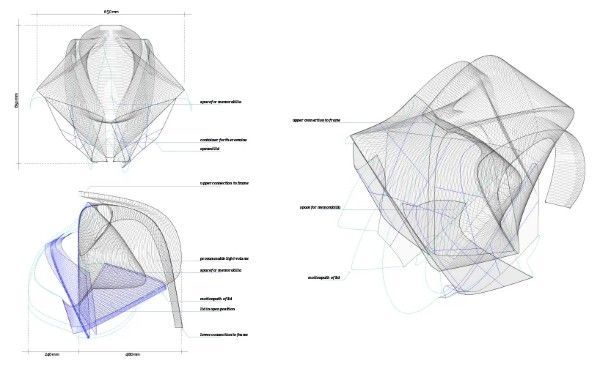How a culture treats the deceased is a reflection of the culture itself. In a world of globalization, cities have become a melting pot of cultures. Designboom in organization with Lien Foundation and ACM Foundation and the support of the National Funeral Directors Association (NFDA), has organized a competition entitled: Design for Death and Architecture. Three prizes were awarded to the winning designs.The first prize of 25,000 Euros went to Marta Piaseczynska + Rangel Karaivonov from Austria. The project was entitled ‘Post-Community’ and embodies a dialogue between the two communities: the living and the deceased. The design is in reaction to the density of today’s urban environments, where cemeteries have become less incorporated in the social life and more of a peripheral location that is occasionally visited.
Post-Community creates a procession by means of a ramp that takes you to the heart of the space, where the floor is a mirror of the sky. Urns line the façade.
The visitor calls a name, causing the urns to shift as the called urn or urns make their way towards the visitor, making it a literal dialogue between the living and the passed-away.The second runner up is ‘My Favorite Place’ by Thomas Series from the United States with a prize of 10,000 Euros. He proposes a ritual object in the landscape or cityscape, with a surface that projects a system of interactive and customized light.
The idea is that this monolith would become a precious symbol.Its presence is celebrated and seeks to de-stigmatize death as it resides in its designated location. It is free of architectural style or rather architecture itself, being its own independent object-in-the-landscape that evokes wonder and awe.
 The third prize of 5,000 Euros went to Sky Light by Juan Isaza from Colombia. The design is more of a landscape or plaza than a building, and it houses up to 20,000 remains encapsulated in a glowing urn light or Sky Star. Thus, the structure is actually of a man-made cosmos where family trees become constellations
The third prize of 5,000 Euros went to Sky Light by Juan Isaza from Colombia. The design is more of a landscape or plaza than a building, and it houses up to 20,000 remains encapsulated in a glowing urn light or Sky Star. Thus, the structure is actually of a man-made cosmos where family trees become constellations
All winning entries provide a freedom. They do not dictate the mourning process, but simply provide a universal space freed of religious and cultural attachment, allowing for all obsequies of whichever nature.
Atrium Space
Urn
Cemetery Drawing
Urn Drawing
Courtesy of Marta Piaseczynska + Rangel Karaivonov – Thomas Series – Juan Isaza


